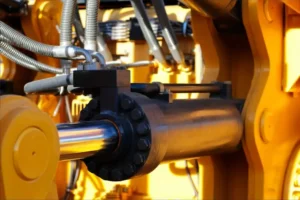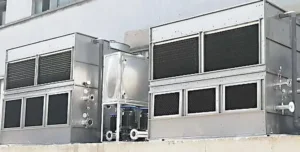
เตาเหนี่ยวนำมีความสำคัญมากขึ้นในการถลุงสังกะสีเนื่องจากประสิทธิภาพและประโยชน์ต่อสิ่งแวดล้อม. บทความนี้นำเสนอเทคโนโลยี, ข้อดี, กระบวนการดำเนินงาน, และแนวโน้มในอนาคตของการใช้เตาหลอมเหนี่ยวนำสำหรับการถลุงสังกะสี.
หลักการทางเทคนิคของการหลอมสังกะสีของเตาหลอมเหนี่ยวนำ
การหลอมสังกะสีสังกะสีของเตาหลอมให้เกิดการเหนี่ยวนำแม่เหล็กไฟฟ้าและผลกระทบความร้อนของกระแสไฟฟ้า. เมื่อสลับกระแสกระแสผ่านขดลวดเหนี่ยวนำ, มันสร้างสนามแม่เหล็กสลับกัน, กระตุ้นกระแสไฟฟ้าที่แข็งแกร่งในเบ้าหลอม, ให้ความร้อนอย่างรวดเร็วและละลายสังกะสี. จุดหลอมเหลวที่ค่อนข้างต่ำของสังกะสี (ประมาณ 419.5 ° C) ช่วยให้การหลอมอย่างมีประสิทธิภาพในเตาหลอมเหนี่ยวนำ.
ข้อดีของการหลอมสังกะสีของเตาหลอมเหนี่ยวนำ
- ประสิทธิภาพสูงและประหยัดพลังงาน: ความร้อนของเตาหลอมเหนี่ยวนำอย่างรวดเร็วและมีประสิทธิภาพ, ลดการใช้พลังงานและการสูญเสียความร้อน, จึงปรับปรุงประสิทธิภาพการหลอม.
- เป็นมิตรกับสิ่งแวดล้อม: พวกเขาผลิตก๊าซของเสียและตะกรันน้อยที่สุด, ซึ่งง่ายต่อการจัดการ. มาตรการด้านสิ่งแวดล้อมขั้นสูง, เช่นตัวกรองกระเป๋า, สามารถลดการปล่อยมลพิษต่อไปได้, สอดคล้องกับมาตรฐานการผลิตสีเขียว.
- ความสะดวกในการใช้งาน: ระบบควบคุมอัตโนมัติในเตาหลอมเหนี่ยวนำทำให้การทำงานง่ายขึ้นและอนุญาตให้มีการควบคุมที่แม่นยำ, เพิ่มประสิทธิภาพการผลิตและลดแรงงานผู้ประกอบการ.
- คุณภาพโลหะสูง: ความร้อนสม่ำเสมอช่วยลดการเกิดออกซิเดชันและสิ่งสกปรก, เพิ่มความบริสุทธิ์และคุณภาพของสังกะสี.
กระบวนการปฏิบัติงานของการหลอมสังกะสีของเตาหลอมเหนี่ยวนำ
โดยทั่วไปกระบวนการเกี่ยวข้องกับ:
- การตระเตรียม: การโหลดวัตถุดิบสังกะสี (เช่น, สังกะสีแท่ง, เม็ด) เข้าไปในเตาเผาและเตรียมวัสดุเสริม (เช่น, แอมโมเนียมคลอไรด์).
- อุ่นเครื่อง: ค่อยๆให้ความร้อนกับโลหะให้ต่ำกว่าจุดหลอมเหลว.
- การถลุง: ละลายสังกะสีอย่างเต็มที่, ด้วยการปรับอุณหภูมิและพลังงานของเตาเผาตามต้องการ.
- การกลั่นกรอง: การเพิ่มตัวแทนกลั่น (เช่น, แอมโมเนียมคลอไรด์) เพื่อกำจัดสิ่งสกปรกและก๊าซ.
- กำลังหล่อ: เทสังกะสีที่หลอมเหลวลงในแม่พิมพ์เพื่อผลิตแท่งโลหะหรือผลิตภัณฑ์โลหะผสมสังกะสี.
แนวโน้มในอนาคตในการหลอมสังกะสีเตาหลอมเหนี่ยวนำ
- ขนาดที่ใหญ่ขึ้นและมีประสิทธิภาพสูงขึ้น: เนื่องจากความต้องการการถลุงสังกะสีเพิ่มขึ้น, เตาหลอมเหนี่ยวนำมีขนาดใหญ่ขึ้นและมีประสิทธิภาพมากขึ้น, การเพิ่มกำลังการผลิต.
- สติปัญญาและระบบอัตโนมัติ: ความก้าวหน้าในเมคคาทรอนิกส์และการควบคุมคอมพิวเตอร์นำไปสู่เตาหลอมเหนี่ยวนำที่ชาญฉลาดและอัตโนมัติมากขึ้น, เสนอการควบคุมที่แม่นยำ, การตรวจสอบระยะไกล, และการวินิจฉัยข้อผิดพลาด.
- การปกป้องสิ่งแวดล้อมและการประหยัดพลังงาน: การพัฒนาในอนาคตจะมุ่งเน้นไปที่การปรับแต่งการออกแบบเตาเผา, เพิ่มประสิทธิภาพความร้อน, และการใช้วัสดุที่เป็นมิตรกับสิ่งแวดล้อมเพื่อลดการใช้พลังงานและการปล่อยมลพิษ.
- การใช้งานอเนกประสงค์: เตาหลอมเหนี่ยวนำจะขยายเกินกว่าสังกะสีไปสู่การหลอมโลหะอื่น ๆ, ขอบคุณการออกแบบแบบแยกส่วนและการกำหนดค่ามัลติฟังก์ชั่น, การจัดเลี้ยงตามความต้องการของอุตสาหกรรมต่างๆ.
สรุปแล้ว, การปักสังกะสีสังกะสีเตาแบบเหนี่ยวนำมีข้อได้เปรียบที่สำคัญในประสิทธิภาพ, ผลกระทบต่อสิ่งแวดล้อม, และความสะดวกในการใช้งาน, ทำให้เป็นเทคโนโลยีสำคัญในอุตสาหกรรม. เมื่อเทคโนโลยีก้าวหน้าและแอพพลิเคชั่นขยายตัว, เตาหลอมเหนี่ยวนำจะมีบทบาทสำคัญมากขึ้นในการพัฒนาอย่างยั่งยืนของการถลุงสังกะสี.







